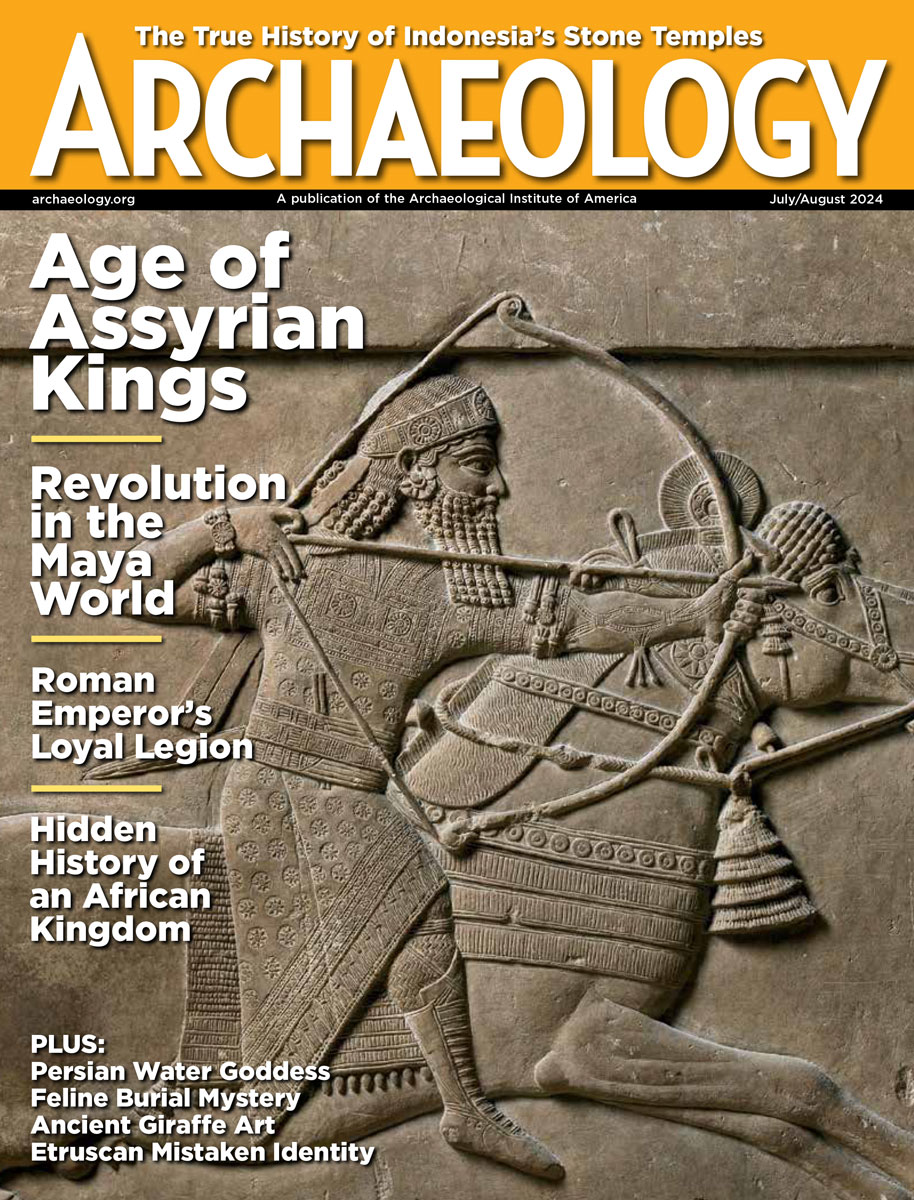Wednesday, February 13
February 13, 2008
Between 1,000 and 5,000 people may have come into the New World after their ancestors spent 20,000 years in Beringia, according to a new genetic study published in Public Library of Science ONE. “Our theory predicts much of the archaeological evidence is underwater. That may explain why scientists hadn’t really considered a long-term occupation of Beringia,” said researcher Andrew Kitchen.
Italian scientists from the National Institute of Nuclear Physics and the University of Pavia compared the amount of arsenic in samples of Napoleon’s hair, to samples taken from his contemporaries, in order to test the theory that he’d been killed by his British captors.
Thailand passed its antiquities laws in 1961, and so it is possible that most of the artifacts in the U.S. from Ban Chiang, where official excavations began in 1974, were looted. “It’s not as easy as you would think to be up to date and conversant with different countries’ laws and to know which foreign laws the U.S. is committed to enforcing and which not,” Forrest McGill, chief curator at the Asian Art Museum, told the New York Times. That enforcement bit is the kicker, isn’t it?Â
Dredging in the San Antonio River uncovered what’s left of a dam built in the 1870s. Much of the dam had been cut away in the 1950s, and what was left had silted over. “This is probably the best-built dam the river has ever seen,” commented Boone Powell, the project architect.Â
Work on a dam in Milton, Florida, caused heavy damage to the Benjamin Jernigan Saw Mill site. The mill, built in 1829, gave the town its name.Â
How effective were the medicines prepared by the ancient Egyptians? Jackie Campbell of the University of Manchester evaluated 1,000 prescriptions recorded on four papyri dating from 1,800 B.C. to 1,200 B.C., and she found that “Sixty-four percent of the prescriptions had therapeutic value on a par with drugs used in the past 50 years.”
- Comments Off on Wednesday, February 13
Tuesday, February 12
February 12, 2008
A convicted arsonist was arrested in South Korea for the burning of the 600-year-old Namdaemun gate in Seoul. “(He said) he committed the crime out of anger because he felt the government did not take enough care with the appeal he filed after being insufficiently compensated for redevelopment in his residential area,” police station chief Kim Young-soo told reporters.
Did more frequent El Ninos drive early Peruvian hunter-gatherers from the coasts to the dry valleys of Norte Chico? Excavations at a mound in Huaricanga have turned up floors, walls and hearth fires, and indicate that the people carried shellfish to the valley and grew squash and cotton. “There’s a very distinctive Andean pattern that starts here and then spreads and forms the foundation for Andean civilization for the next 5,000 years,” said Jonathan Haas of the Field Museum in Chicago. Â
More information on the Neolithic farming village discovered in Egypt is available at National Geographic News. Archaeologists working on the project found clay floors; hearths containing wheat and barley; the bones of sheep, goats, and pigs imported from the Middle East; pottery and tools; and jewelry. “It’s a missing link filling in a very important and poorly known phase of the development of agricultural systems, which led to the pyramids and later civilizations,” commented archaeobiologist Bruce Smith.Â
There’s also more information on the 2,000-year-old hematite, or ochre mine discovered in the Andes Mountains. The Nasca people, who flourished between 100 B.C. and 600 A.D., used the mineral to decorate their pottery.Â
The race is on to plant some 30,000 trees around Ancient Olympia. Wildfires in southern Greece last summer wiped out the site’s forests, and officials want it to look it’s best for the lighting of the Olympic flame on March 24, which will then be carried to Beijing.Â
This spring, the site of Kelly’s Last Stand will be excavated in Australia. “We’re hoping to find physical remains of the original inn, the Ann Jones Inn and artifacts of the siege that happened there in 1880, that resulted in the death of three members of the Kelly gang and in the capture, or course, of Ned Kelly,” said archaeologist Adam Ford.
- Comments Off on Tuesday, February 12









